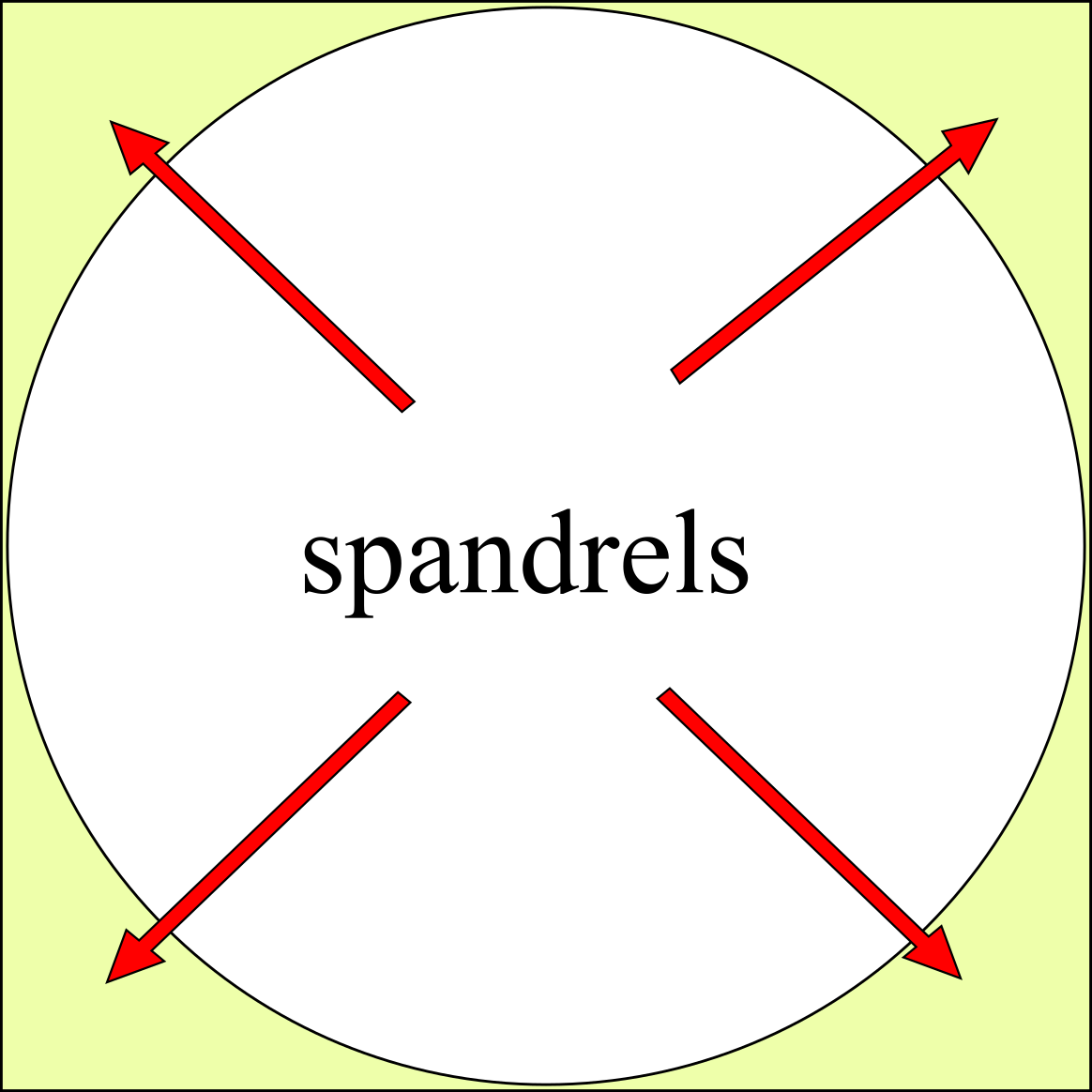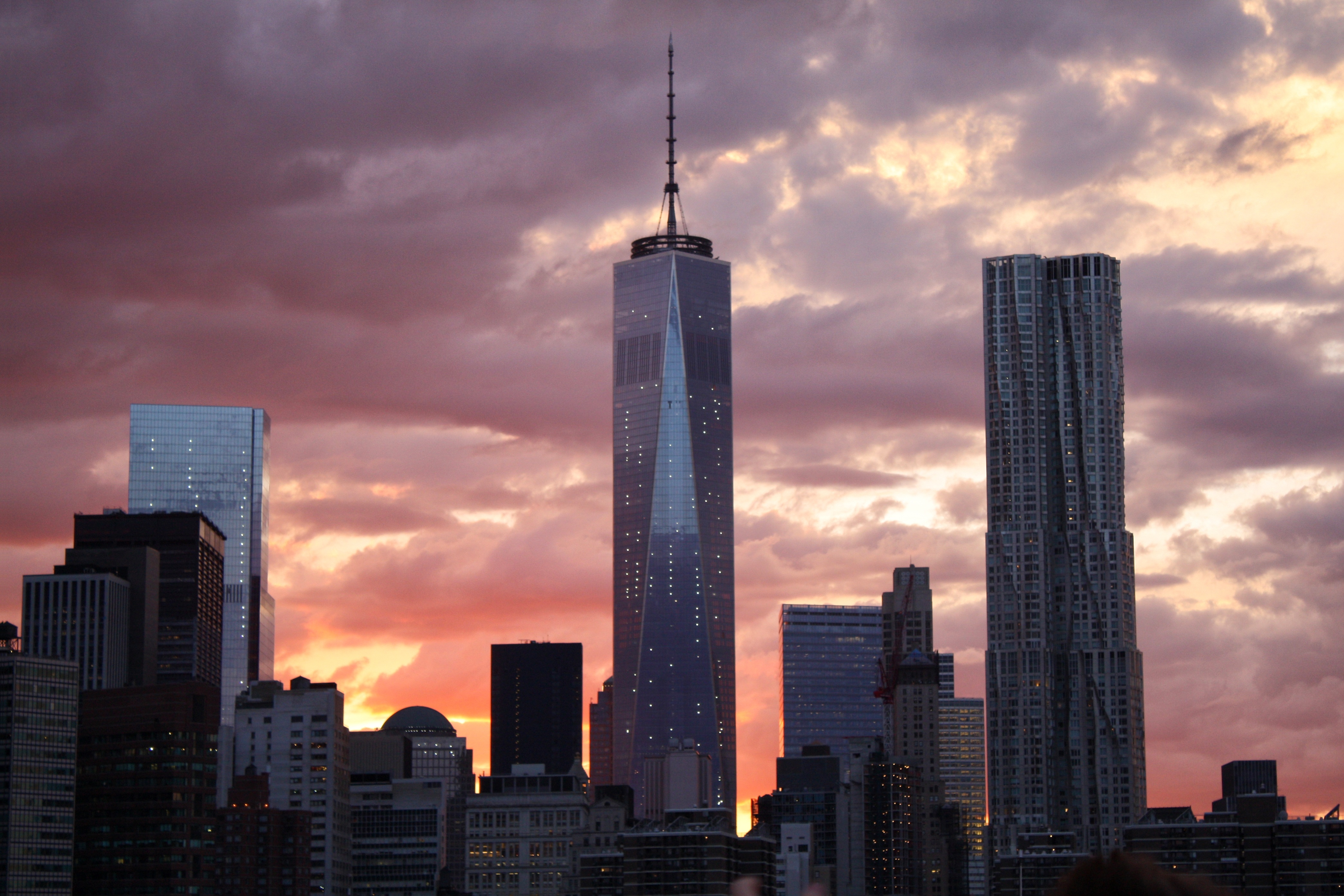|
Comcast Building
30 Rockefeller Plaza (officially the Comcast Building; formerly RCA Building and GE Building) is a skyscraper that forms the centerpiece of Rockefeller Center in the Midtown Manhattan neighborhood of New York City, New York. Completed in 1933, the 66-story, building was designed in the Art Deco style by Raymond Hood, Rockefeller Center's lead architect. 30 Rockefeller Plaza was known for its main tenant, the Radio Corporation of America (RCA), from its opening in 1933 until 1988 and then for General Electric until 2015, when it was renamed for its owner Comcast. The building also houses the headquarters and New York studios of television network NBC; the headquarters is sometimes called 30 Rock, a nickname that inspired the NBC sitcom of the same name. The tallest structure in Rockefeller Center, the building is the 28th tallest in New York City and the 65th tallest in the United States, and was the third tallest building in the world when it opened. 30 Rockefeller Plaza' ... [...More Info...] [...Related Items...] OR: [Wikipedia] [Google] [Baidu] |
Rockefeller Plaza
Rockefeller Center is a complex of 19 commerce, commercial buildings covering between 48th Street (Manhattan), 48th Street and 51st Street (Manhattan), 51st Street in the Midtown Manhattan neighborhood of New York City. The 14 original Art Deco buildings, commissioned by the Rockefeller family, span the area between Fifth Avenue and Sixth Avenue, split by a large sunken square and a private street called Rockefeller Plaza. Later additions include 75 Rockefeller Plaza across 51st Street at the north end of Rockefeller Plaza, and four International Style (architecture), International Style buildings on the west side of Sixth Avenue. In 1928, Columbia University, the owner of the site, leased the land to John D. Rockefeller Jr., who was the main person behind the complex's construction. Originally envisioned as the site for a new Metropolitan Opera building, the current Rockefeller Center came about after the Met could not afford to move to the proposed new building. Various plan ... [...More Info...] [...Related Items...] OR: [Wikipedia] [Google] [Baidu] |
Comcast
Comcast Corporation, formerly known as Comcast Holdings,Before the AT&T Broadband, AT&T merger in 2001, the parent company was Comcast Holdings Corporation. Comcast Holdings Corporation now refers to a subsidiary of Comcast Corporation, not the parent company (seeBloomberg profile on Comcast Holdings Corporation. Technically, the current parent company was founded December 7, 2001 as CAB Holdings Corporation, which changed its name to AT&T Comcast Corporation before finally taking on the Comcast Corporation name (seeNov 2002 8K/A Form anNov 2002 S-4). is an American Multinational corporation, multinational mass media, telecommunications, and entertainment conglomerate. Headquartered at the Comcast Center in Philadelphia, the company was ranked 51st in the Forbes Global 2000, ''Forbes'' Global 2000 in 2023. It is the List of telephone operating companies, fourth-largest telecommunications company by worldwide revenue, after Deutsche Telekom, China Mobile, and Verizon. Comcast i ... [...More Info...] [...Related Items...] OR: [Wikipedia] [Google] [Baidu] |
National Historic Landmark
A National Historic Landmark (NHL) is a National Register of Historic Places property types, building, district, object, site, or structure that is officially recognized by the Federal government of the United States, United States government for its outstanding historical significance. Only some 2,500, or roughly three percent, of over 90,000 places listed on the country's National Register of Historic Places (NRHP) are recognized as National Historic Landmarks. A National Historic Landmark District may include many contributing properties that are buildings, structures, sites or objects, and it may also include non-contributing properties. Contributing properties may or may not also be separately listed as NHLs or on the NRHP. History The origins of the first National Historic Landmark was a simple cedar post, placed by the Lewis and Clark Expedition on their 1804 outbound trek to the Pacific Ocean in commemoration of the death from natural causes of Sergeant Charles Floyd (e ... [...More Info...] [...Related Items...] OR: [Wikipedia] [Google] [Baidu] |
New York City Landmarks Preservation Commission
The New York City Landmarks Preservation Commission (LPC) is the Government of New York City, New York City agency charged with administering the city's Historic preservation, Landmarks Preservation Law. The LPC is responsible for protecting New York City's architecturally, historically, and culturally significant buildings and sites by granting them landmark or historic district status, and regulating them after designation. It is the largest municipal preservation agency in the nation. , the LPC has designated Lists of New York City landmarks, more than 37,800 landmark properties in all Boroughs of New York City, five boroughs. Most of these are concentrated in historic districts, although there are over a thousand individual landmarks, as well as numerous interior and New York City scenic landmarks, scenic landmarks. Mayor Robert F. Wagner Jr. first organized a preservation committee in 1961, and the following year, created the LPC. The LPC's power was greatly strengthened af ... [...More Info...] [...Related Items...] OR: [Wikipedia] [Google] [Baidu] |
Diego Rivera
Diego Rivera (; December 8, 1886 – November 24, 1957) was a Mexican painter. His large frescoes helped establish the Mexican muralism, mural movement in Mexican art, Mexican and international art. Between 1922 and 1953, Rivera painted murals in, among other places, Mexico City, Chapingo, and Cuernavaca, Mexico; and San Francisco, Detroit, and New York City. In 1931, a retrospective exhibition of his works was held at the Museum of Modern Art in Manhattan. That was before he completed his 27-mural series known as ''Detroit Industry Murals''. Rivera had four wives and numerous children, including at least one illegitimate daughter. His first child and only son died at the age of two. His third wife was fellow Mexican artist Frida Kahlo, with whom he had a volatile relationship that continued until her death. His previous two marriages, ending in divorce, were respectively to a fellow artist and a novelist, and his final marriage was to his agent. Due to his importance in the ... [...More Info...] [...Related Items...] OR: [Wikipedia] [Google] [Baidu] |
Man At The Crossroads
''Man at the Crossroads'' (1933) was a fresco by Mexican painter Diego Rivera. Originally slated to be installed in the lobby of the 30 Rockefeller Plaza, RCA Building at Rockefeller Center in New York City, the fresco showed aspects of contemporary social and scientific culture. As originally installed, it was a three-Panel painting, paneled artwork. A central panel, depicting a worker controlling machinery, was flanked by two other panels, ''The Frontier of Ethical Evolution'' and ''The Frontier of Material Development'', which respectively represented socialism and capitalism. The Rockefeller family approved of the fresco's idea: showing the contrast of capitalism as opposed to communism. However, after the ''New York World-Telegram'' complained about the piece, calling it "anti-capitalist propaganda", Rivera added images of Vladimir Lenin and a Soviet May Day parade in response. When these were discovered, Nelson Rockefeller – at the time a director of the Rockefeller Cente ... [...More Info...] [...Related Items...] OR: [Wikipedia] [Google] [Baidu] |
Spandrel
A spandrel is a roughly triangular space, usually found in pairs, between the top of an arch and a rectangular frame, between the tops of two adjacent arches, or one of the four spaces between a circle within a square. They are frequently filled with decorative elements. Meaning There are four or five accepted and cognate meanings of the term ''spandrel'' in architecture, architectural and art history, mostly relating to the space between a curved figure and a rectangular boundary – such as the space between the curve of an arch and a rectilinear bounding moulding, or the wallspace bounded by adjacent arches in an arcade and the stringcourse or moulding above them, or the space between the central medallion of a carpet and its rectangular corners, or the space between the circular face of a clock and the corners of the square revealed by its hood. Also included is the space under a flight of stairs, if it is not occupied by another flight of stairs. In a building with more ... [...More Info...] [...Related Items...] OR: [Wikipedia] [Google] [Baidu] |
Limestone
Limestone is a type of carbonate rock, carbonate sedimentary rock which is the main source of the material Lime (material), lime. It is composed mostly of the minerals calcite and aragonite, which are different Polymorphism (materials science), crystal forms of calcium carbonate . Limestone forms when these minerals Precipitation (chemistry), precipitate out of water containing dissolved calcium. This can take place through both biological and nonbiological processes, though biological processes, such as the accumulation of corals and shells in the sea, have likely been more important for the last 540 million years. Limestone often contains fossils which provide scientists with information on ancient environments and on the evolution of life. About 20% to 25% of sedimentary rock is carbonate rock, and most of this is limestone. The remaining carbonate rock is mostly Dolomite (rock), dolomite, a closely related rock, which contains a high percentage of the mineral Dolomite (mine ... [...More Info...] [...Related Items...] OR: [Wikipedia] [Google] [Baidu] |
Setback (architecture)
A setback, in the specific sense of a step-back, is a step-like form of a wall or other building frontage, also termed a recession or recessed story. Step-backs lower the building's center of mass, making it more stable. A setback as a minimum one-bay indent across all stories is called a recessed bay or recess and is the more common exterior form of an alcove. Upper stories forming a step-back may form a belvedere – and in residential use are considered the penthouse. If part of the roof, then they are a loft or attic/ garret. History Setbacks were used by people to increase the height of masonry structures by distributing gravity loads produced by building materials such as clay, stone, or brick. This was achieved by regularly reducing the footprint of each level located successively farther from the ground. Setbacks also allowed the natural erosion to occur without compromising the structural integrity of the building. The most prominent example of a setback techn ... [...More Info...] [...Related Items...] OR: [Wikipedia] [Google] [Baidu] |
1916 Zoning Resolution
The 1916 Zoning Resolution in New York City was the first citywide Zoning in the United States, zoning code in the United States. The zoning resolution reflected both Boroughs of New York City, borough and local interests, and was adopted primarily to stop massive buildings from preventing light and air from reaching the streets below. It also established limits in building massing at certain heights, usually interpreted as a series of Setback (architecture), setbacks and, while not imposing height limits, restricted towers to 25% of the Land lot, lot size. The chief authors of this resolution were George McAneny and Edward M. Bassett. Impact The 1916 Zoning Resolution had a major impact on urban development in both the United States and internationally. Architectural delineator Hugh Ferriss popularized these new regulations in 1922 through a series of massing studies, clearly depicting the possible forms and how to maximize building volumes. "By the end of the 1920s the setback ... [...More Info...] [...Related Items...] OR: [Wikipedia] [Google] [Baidu] |
Massing
Massing is the architecture, architectural term for general Shape and form (visual arts), shape, form and size of a structure. Characteristics Massing is three-dimensional, a matter of form, not just an outline from a single perspective, a shape. Massing influences the sense of space which the building encloses, and helps to define both the interior space and the exterior shape of the building. The creation of massing, and changes to it, may be additive (accumulating or repeating masses) or subtractive (creating spaces or voids in a mass by removing parts of it). Massing can also be significantly altered by the materials used for the building's exterior, as transparent, reflective, or layered materials are perceived differently. It is generally held that architectural design begins by considering massing. From a distance, massing, more than any architectural detail, is what creates the most impact on the eye. Architectural details or ornaments may serve to reinforce or minimi ... [...More Info...] [...Related Items...] OR: [Wikipedia] [Google] [Baidu] |
List Of Tallest Buildings In The United States
The world's first skyscraper was built in Chicago in 1885. Since then, the United States has been home to some of the world's tallest skyscrapers. New York City, and especially the borough of Manhattan, has the tallest skyline in the country. Eleven American buildings have held the title of tallest building in the world. New York City and Chicago have been the centers of American skyscraper building. The 10-story Home Insurance Building, built in Chicago in 1885, is regarded as the world's first skyscraper; the building was constructed using a novel steel-loadbearing frame which became a standard of the industry worldwide. Since its topping out in 2013, One World Trade Center in New York City has been the tallest skyscraper in the United States. Its spire brings the structure to a symbolic architectural height of , connoting the year the Declaration of Independence was signed, though the absolute tip (or pinnacle) of the structure is measured at . However, the observation deck ... [...More Info...] [...Related Items...] OR: [Wikipedia] [Google] [Baidu] |








